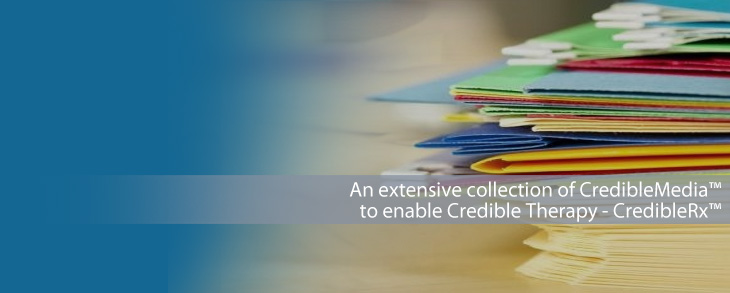Congenital Short QT Syndrome (CSQTS)
Congenital Short QT Syndrome (CSQTS) is an inherited electrical disorder of the heart, first described in 2000.1
The cardinal feature of CSQTS is an abnormally short QT interval. Based on a number of studies in various populations, a normal QT interval is considered to be greater than or equal to 350ms in men and 360ms in women. 2,3 However, data from patients affected by CSQTS suggest that the QT interval in most of these individuals measures 310ms or less. 4
CSQTS has been associated with Atrial Fibrillation (AF), Ventricular Fibrillation (VF) and other malignant ventricular tachycardias, syncope and sudden cardiac death (SCD). 5 These events can occur at any age in individuals affected by CSQTS, including in infants and adolescents. 6
To date, five CSQTS variants have been described (CSQT1 through CSQT5). 7-9However, the known number of patients with each of these variants is very small, as compared to a much larger number of patients with Congenital Long QT Syndrome (CLQTS). Therefore, the genotype-phenotype correlations of congenital CSQTS have not been as thoroughly described as those for CLQTS.
There appears to be an equal distribution of CSQTS among males and females, but more data are needed in order to confirm these findings. 1, 10, 11
Rufinamide, an anti-epileptic medication approved for use in children with Lennox-Gastaut Syndrome, and Cenobamate, a drug approved for treatment of partial-onset seizures, have been determined to result in significant QTc-shortening and are the only marketed drugs with an absolute contraindication for use in patients with CSQTS.12 However, this does not mean that other drugs that could potentially shorten the QT interval should be automatically considered safe to use in this population.
Other molecules that are known to significantly shorten the QT interval and induce VF in isolated hearts include 1,3-bis(2-hydroxy-5-trifluoromethylphenyl)urea (also known as NS1643), Mallotoxin (a naturally occurring compound purified from the plantMallotus philippinensis), levcromakalim (a vasodilator) and the anti-anginal nicorandil.13,14
Currently, the use of implantable cardioverter-defibrillators (ICD) is the most accepted treatment option for individuals with CSQTS. Limited data suggest quinidine and disopyramide may be effective in CSQTS1 patients. Evidence for their benefit in patients with other CSQTS variants is still scarce. In individuals who exhibit only AF, propafenone has shown promising results in preventing AF paroxysms, without recurrence of arrhythmia after 24 months. 15

- Gussak I, Brugada P, Brugada J, Wright RS, Kopecky SL, Chaitman BR, Bjerregaard P. Idiopathic short QT interval: a new clinical syndrome? Cardiology. 2000;94(2):99-102.
- Rautaharju PM, Zhou SH, Wong S, Calhoun HP, Berenson GS, Prineas R, Davignon A. Sex differences in the evolution of the electrocardiographic QT interval with age. Can J Cardiol. 1992 Sep;8(7):690-5.
- Mason JW, Ramseth DJ, Chanter DO, Moon TE, Goodman DB, Mendzelevski B. Electrocardiographic reference ranges derived from 79,743 ambulatory subjects. J Electrocardiol. 2007 Jul;40(3):228-34.
- Borggrefe M, Wolpert C, Antzelevitch C, Veltmann C, Giustetto C, Gaita F, Schimpf R. Short QT syndrome. Genotype-phenotype correlations. J Electrocardiol. 2005 Oct;38(4 Suppl):75-80.+
- Cerrone M, Noujaim S, Jalife J. The short QT syndrome as a paradigm to understand the role of potassium channels in ventricular fibrillation. J Intern Med. 2006 Jan;259(1):24-38.
- Hong K, Piper DR, Diaz-Valdecantos A, Brugada J, Oliva A, Burashnikov E, Santos-de-Soto J, Grueso-Montero J, Diaz-Enfante E, Brugada P, Sachse F, Sanguinetti MC, Brugada R. De novo KCNQ1 mutation responsible for atrial fibrillation and short QT syndrome in utero. ardiovasc Res. 2005 Dec 1;68(3):433-40.
- Bellocq C, van Ginneken AC, Bezzina CR, Alders M, Escande D, Mannens MM, Baró I, Wilde AA. Mutation in the KCNQ1 gene leading to the short QT-interval syndrome. Circulation. 2004 May 25;109(20):2394-7.
- Priori SG, Pandit SV, Rivolta I, Berenfeld O, Ronchetti E, Dhamoon A, Napolitano C, Anumonwo J, di Barletta MR, Gudapakkam S, Bosi G, Stramba-Badiale M, Jalife J. A novel form of short QT syndrome (SQT3) is caused by a mutation in the KCNJ2 gene. Circ Res. 2005 Apr 15;96(7):800-7.
- Antzelevitch C, Pollevick GD, Cordeiro JM, Casis O, Sanguinetti MC, Aizawa Y, Guerchicoff A, Pfeiffer R, Oliva A, Wollnik B, Gelber P, Bonaros EP Jr,Burashnikov E, Wu Y, Sargent JD, Schickel S, Oberheiden R, Bhatia A, Hsu LF, Haïssaguerre M, Schimpf R, Borggrefe M, Wolpert C. Loss-of-function mutations in the cardiac calcium channel underlie a new clinical entity characterized by ST-segment elevation, short QT intervals, and sudden cardiac death. Circulation. 2007 Jan 30;115(4):442-9.
- Gaita F, Giustetto C, Bianchi F, Wolpert C, Schimpf R, Riccardi R, Grossi S, Richiardi E, Borggrefe M. Short QT Syndrome: a familial cause of sudden death. Circulation. 2003 Aug 26;108(8):965-70.
- Brugada R, Hong K, Dumaine R, Cordeiro J, Gaita F, Borggrefe M, Menendez TM, Brugada J, Pollevick GD, Wolpert C, Burashnikov E, Matsuo K, Wu YS, Guerchicoff A, Bianchi F, Giustetto C, Schimpf R, Brugada P, Antzelevitch C. Sudden death associated with short-QT syndrome linked to mutations in HERG. Circulation. 2004 Jan 6;109(1):30-5.
- Banzel™ (rufinamide) package insert. Woodcliff Lake, NJ: Eisai Co., Ltd.; 2008 Nov.
- Lu HR, Vlaminckx E, Hermans AN, Rohrbacher J, Van Ammel K, Towart R, Pugsley M, Gallacher DJ. Predicting drug-induced changes in QT interval and arrhythmias: QT-shortening drugs point to gaps in the ICHS7B Guidelines. Br J Pharmacol. 2008 Aug;154(7):1427-38.
- Robert E, Delye B, Aya G, Péray P, Juan JM, Sassine A, de La Coussaye JE, Eledjam JJ. Comparison of proarrhythmogenic effects of two potassium channel openers, levcromakalim (BRL 38227) and nicorandil (RP 46417): a high-resolution mapping study on rabbit heart. Cardiovasc Pharmacol. 1997 Jan;29(1):109-18.
- Gaita F, Giustetto C, Bianchi F, Schimpf R, Haissaguerre M, Calo L, Brugada R, Antzelevitch C, Borggrefe M, Wolpert C. (2004). "Short QT syndrome: pharmacological treatment". J Am Coll Cardiol 43 (8): 1494-9.








